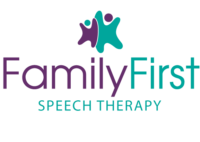What is cued speech?
Cued speech is using visual and tactile strategies to increase the understanding of where sounds should be made. This practice can be a very helpful tool when working with your child.
How to practice cued speech with your child

Let’s say your child is working on the sounds K and G. Touch your neck, right under your jaw, high on your neck. Open your mouth wide and show your child the tongue is way in the back of your mouth while touching your neck.
In the beginning, I want you to do this with no other sounds. Model and describe what you’re doing. “I have a big mouth and I cough way in the back of my mouth.” And again touch your neck as you make a gentle K “coughing” sound.
Now do it together. Turn the cough sound into a gentle K. “Yes, I hear a K in the back of your mouth. I love your big mouth and I can see your tongue all the way in the back!”
Now add the K sound to the back end of vowels. This is called a VC — vowel consonant blend.

Most children know the vowel letter NAMES. Using a visual will help the understanding of the task AND increase independence once the task is learned.
The VCs would sound like this. The letter NAME (or long vowel sound) and then the K sound.
- A pause K
- E pause K
- I pause K
- O pause K
- U pause K
Every time you say the K sound, you are touching the neck to indicate where the sound is made.
Work to take out the pause. They are not all real words — but some of them are.
- Ache
- Eek
- Ike
- Oak
- Youk
Then move on to the K sound in one syllable words (e.g., sock, like, talk, look).
TIP: Try to think of functional words your child says all the time. This will help carry over into everyday speech clarity.
Sound cues really help children understand sound placement.
Don’t wait until it’s too late!
If your child is struggling with speech clarity, don’t wait! All sounds should be made correctly and clearly by age 5. YES, 5 years old! (Only the TH is perfected during the 6th year.)
If you could use some help, set up a free consultation here to find out sound cues for your child or how to increase clear speech at home (with only 6 minutes of work/practice a day!).
The longer you wait, the longer you are allowing an incorrect pattern of speech to be built. This means it will be harder for your child to change to a correct speech production. A consultation is free — find out what to do now.
Photo by Thomas Park on Unsplash
